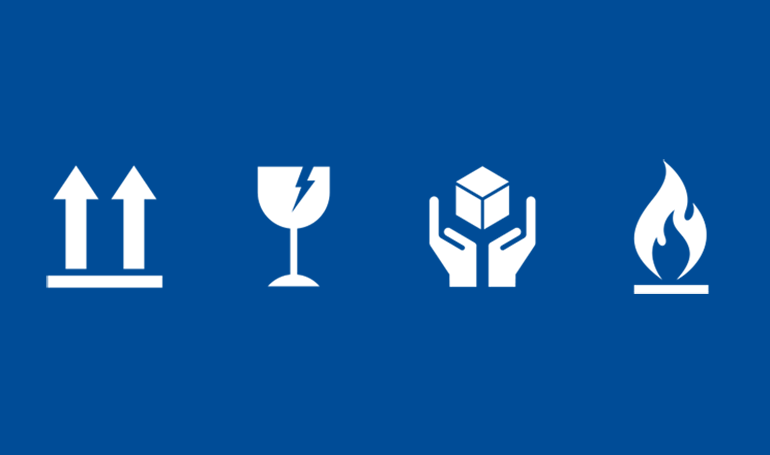Unless you count the lids or flaps, packaging like shipping containers and boxes really don’t have any “moving parts.” Still, they often come with a “user manual” of sorts. It’s generally a very brief guide in the form of symbols printed on the outside of the box.
We’ve all seen these images. However, in today’s busy world, it’s easy to ignore them. But when you do, you run the risk of damaging the goods inside by the way you handle the container. Or worse, with some materials like flammable or toxic substances, the risk goes beyond the contents of the container to the environment where it is placed during shipping or storage. With those packages, there are serious safety concerns.
Consequently, it’s a good idea to be sure you understand the meaning of packaging symbols.
Do You Know What To Do When You See These 8 Signs?
Packaging symbols are meant to communicate information to anyone who handles or encounters a container. Some of the most frequently used “messages” include:

1. This symbol indicates the proper orientation for a container. It says “this side up,” but in a language accessible to any viewer. While items in a container should always be padded and secured, there is often still room for movement. Tip a package with this marking upside down, and damage is likely to occur.

2. When you see this symbol, you’re being told that the contents are fragile. A package with this indicator should be handled carefully—it shouldn’t be dropped, stacked on, etc.

3. This symbol has a meaning similar to the one above. However, the items in a package marked this way may not be fragile like fine china, but instead subject to damage if they are shaken or otherwise moved too abruptly. Certain types of electronics and pharmaceuticals are examples of products requiring this type of special care.

4. One of the most important symbols to be aware of, this one indicates that what’s in a container is flammable. As a result, the package should be kept away from heat sources and also from material that could catch fire if the package were to ignite.

5. If a package contains products that are sensitive to large temperature fluctuations, it will bear this symbol. Containers holding food items and medications are often marked this way. They should be protected from getting too hot or cold.

6. This symbol indicates that the contents in a package are sensitive to moisture. A container labeled this way should be protected from getting wet during its journey. Ideally, it also shouldn’t be left in particularly humid or damp environments for too long.

7. Used exclusively with wooden crates, this symbol means that the container has been certified to be free of pests. Countries require that crates be properly treated to prevent infestations.

8. The familiar “recycle” symbol means that the packaging is recyclable and should be handled as such once it’s no longer needed.
Getting Fluent Pays Off
The symbols above are just some of the more commonly used markings. There are many others. If your job involves handling containers, it’s worth the time to become fully fluent in the language of packaging symbols. Particularly if you work in a fast-paced environment, it’s good to know at a glance how to handle a container safely—to protect the contents and yourself.
 303-399-3630
303-399-3630